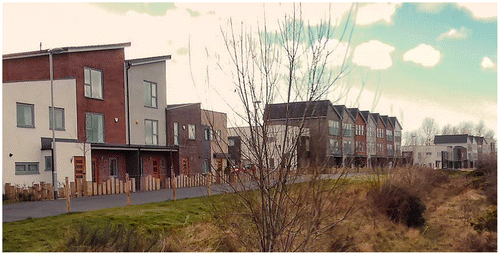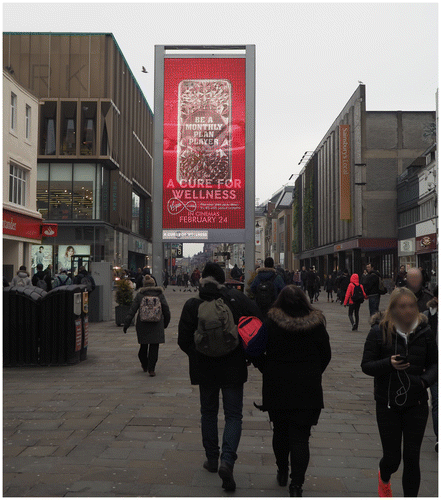In 2007 a financial crisis in the subprime property market of the USA triggered a global recession of unprecedented scale. It spread quicker and wider across developed economies than financial crises had ever done before, due to the high degree of international economic integration that now exists. The crisis which started in the development industry has had far reaching effects on public policy, politics and governance, and many of the ‘shockwaves’ are still being felt, nearly a decade later. Crucially, in the impacts of the economic recession that followed the crisis, legacies that have been set in train and the resultant built environments are extremely different in different countries, regions and cities. In the UK, the separation of London and the south-east from the rest has been exacerbated. As confidence in the property sector weakened, developments particularly outside of London were put on hold and the construction industry entered meltdown. The recovery in the regions has been slow and painful. Meanwhile, London and the south-east have prospered, fuelled in part by an overheated property market while the economy of the north remains more fragile.
The political responses to the crisis have also varied between countries and economic blocs. The European response has been to impose ‘austerity’, which has meant swingeing cuts in public expenditure on its members with weaker economies. Greece, in particular, has suffered, alongside Ireland, Spain and Portugal. The UK, despite maintaining its position as the sixth largest economy in the world, has also seen deep reductions in central and local government spending. The combination of these cuts in public bodies and public servants, combined with a political swing towards neo-liberalism and deregulation, have served to shift and undermine a substantial set of policies, guidance and investment in urban design and statutory planning. It might be argued that a national vision, at least as much as one has ever existed, of ‘quality’ in the built environment that came about through work of the Commission for Architecture and the Built Environment (CABE) established in 1999, has vanished since its demise in 2011.Footnote1
The closure of CABE entailed the disappearance of national level design guidance, research and training as well as design review services. However, it was not the only government response to the recession that has affected the built environment. In 2012 there was a major reform of the planning system. Set against a background of anti-planning rhetoric, in England national level planning policy was simplified into a single document ‒ the National Planning Policy Framework (NPPF). As well as sweeping away a raft of national guidance the NPPF introduced a presumption in favour of ‘sustainable development’. Concurrently, local authorities faced severe cuts to their spending. Planning departments were greatly reduced and many authorities retreated to delivering their statutory requirements only, so that more ‘optional’ services such as urban design teams effectively disappeared. Moreover, the NPPF also introduced the highly problematic concept of ‘viability’. A development is only ‘viable’ if a developer can make a reasonable profit on it. The impact of this on development has been to artificially inflate land prices as developers who are confident they will be able to negotiate themselves out of less profitable planning obligations, such as transport and infrastructure, will be willing to pay more, in essence creating a vicious cycle of escalating prices and poor quality development.
However, the fortunes of housing development have played out differently in different regions, although generally the results have been poor nationally. The UK faces a huge housing crisis. The recession has generally not improved housing affordability nor availability. There are shortages of all types of suitable homes, from the young seeking their first independence, to those wishing to live independently into older age; and there are far too few affordable homes for all life stages. However, it might be argued that the quality of housing developments has suffered the most due to recessionary pressures. While mass housing in the UK since the 1980s has been criticized for its largely poor quality, in the mid-2000s there were encouraging signs of a more progressive, design conscious approach among house builders. While standardized designs and approaches dominated, some developers did embark on more experimental design. South Staiths Gateshead, a collaboration between fashion designer Wayne Hemmingway and Wimpey Homes, won an award, the RIBA prize for best large housing development in 2005 and is a good example (Figure ). However, this has generally not been repeated and since the recession ‒ particularly in weaker property markets across the country ‒ there has been a return to far more standardized and unadventurous house building.
A further impact of the recession was that many small and medium-sized enterprises who built homes went into liquidation as availability of bank credit dried up. Although not universally true, such builders were more likely to build more individual and bespoke homes; again, their demise has added to the generally appalling design quality of much new build housing in the UK. In essence, therefore, the system of housing provision in England since the recession is completely broken. The deregulation of planning; the lack of national guidance on quality; the lack of appropriate skills in planning services; the artificiality of viability testing; and the inherent deficiency of large housing developers to deliver sufficient quantity or quality of development have become even more entrenched during the recession. The result is that our towns and cities are encircled by suburbs of an ever more depressing and miserable nature.
Another problematic situation exacerbated by the recession has been the fortunes of local shopping streets. The restructuring of retailing in the 1980s and 1990s with the introduction of ‘one-stop-shop’ giant supermarkets and out-of-town malls providing for all consumer needs under one roof began challenging times for local high streets. This has been greatly exacerbated by a more recent trend in online shopping. As local family businesses have disappeared, many once thriving local high streets have become a squalid concoction of fast food joints, betting shops and payday loan outlets ‒ strewn with rubbish and blemished by cracked paving, empty planters and vandalized street furniture. However, all is not well even in apparently thriving shopping centres. Before the recession, Newcastle’s Northumberland Street was ‘famed’ for having the highest commercial rents outside of London. This is certainly no longer the case. A lack of ability by the local authority to invest in the street means the street now has a decidedly neglected feel. Moreover, the local authority, desperate for revenue, has allowed the erection of garish and unsightly advertising screens across the city ‒ including Northumberland Street (Figure ) ‒ further detracting from the quality of the public realm.
Two papers in this special themed issue offer empirical research to demonstrate the uneven impacts of recession in the UK, offering the reader a comparison between the impacts of the economic boom in central London in the years 2008–2015 to the recession driven ‘toxic’ high streets of suburban Newcastle. In a reflective piece, written especially for this themed issue, Christodolou and Lada reflect on the impacts of the crisis on the Greek planning system and the loss of traditional urban design qualities in historic town centres.
Both Ryan and Cuthbert in their respective reflective opinion pieces suggest that there is some room for optimism. Ryan points out that the withdrawal of the state means that the more grandiose visions of planners and designers, visions that would lead to a sterile, homogenous environment such as proposed by Daniel Burnham for Chicago, will no longer attract investment. Cuthbert proposes that urban designers can exert some positive influence, through maximizing benefits for a majority, rather than seeking to serve the privileged few. Both the UK and now the USA have plans to renew and extend their infrastructure. While urban designers have little power to influence key decisions about the location of rail routes, roads and bridges, they can have influence on specific design decisions and the embedding of urban infrastructure into the urban tissue and movement systems. The post-millennium boom years have provided some striking examples of the type of quality that can be achieved, and urban designers at last have some good precedents to draw on to convince their clients.
At the other end of the urban scale, the recession has renewed interest in citizen movements and small-scale ‘tactical’ and temporary projects (Hou Citation2010; Bishop and Williams Citation2012; Mukhija and Loukaitou-Sideris Citation2014). These small-scale projects offer hope for an everyday activism that can improve environmental quality, empower individuals and provide an opportunity for creativity. In this issue Kamvasinou makes an important contribution where she argues, through the evidence of her empirical study, that the binary divide between ‘bottom up’ and ‘top down’ is too reductive. Stakeholders with a longer time frame are becoming interested in these projects and together new types of partnership can be forged.
These types of grassroots movements, some officially sanctioned through the UK’s Localism Act, others less so, do offer the potential to be more responsive to community needs, in ways that municipal care sometimes struggled to deliver. For example, the care and maintenance and management of public spaces, such as parks, has also offered opportunities to local people to become actively involved as the state has retreated. Communities are also increasingly aware of the links between our built environment, health and well-being, for example. In Kenton, Newcastle, a local community took on and defeated a major fast food giant who wanted to open a drive-through restaurant near to their local secondary school. A combination of concerns about the impact on their children’s diets, increasing traffic congestion and the dangers of enticing children to cross an already busy road and more generally, the message the development, which was proposed for a prominent site, would send out about their local community, galvanized local action. While few would view the Kenton example as anything but positive, there is always a question around just who in communities is driving change and which communities have the resources to empower them to act. There is a danger that the articulate middle classes will ‘get their way’ while poorer communities languish with ever more residual public services.
More generally, we continue to live in extremely uncertain times. The consequences of Brexit for the UK and globally the rise of right-wing political regimes in many developed countries have yet to fully play out. Whatever else, the global recession demonstrated the fragility of developed nations’ economies and unfortunately there is little to suggest in that respect there has been any change. As urban design academics and practitioners we can only work in our own spheres, trying to inspire confidence that quality in the built environment is worthwhile and that urban design, despite difficulties, can provide for the public good.
Disclosure statement
No potential conflict of interest was reported by the authors.
Notes
1. The devolved governments of Scotland and Northern Ireland have national policies on architectural quality in contrast to the rest of the UK.
References
- Bishop P, and L. Williams. 2012. The Temporary City. Abingdon: Routledge.
- Hou, J. 2010. Insurgent Public Space: Guerilla Urbanism and the Remaking of Contemporary Cities. Abingdon: Routledge.
- Mukhija, V., and A. Loukaitou-Sideris, eds. 2014. The Informal American City: Beyond Taco Trucks and Day Labor. Cambridge, MA: MIT Press.


